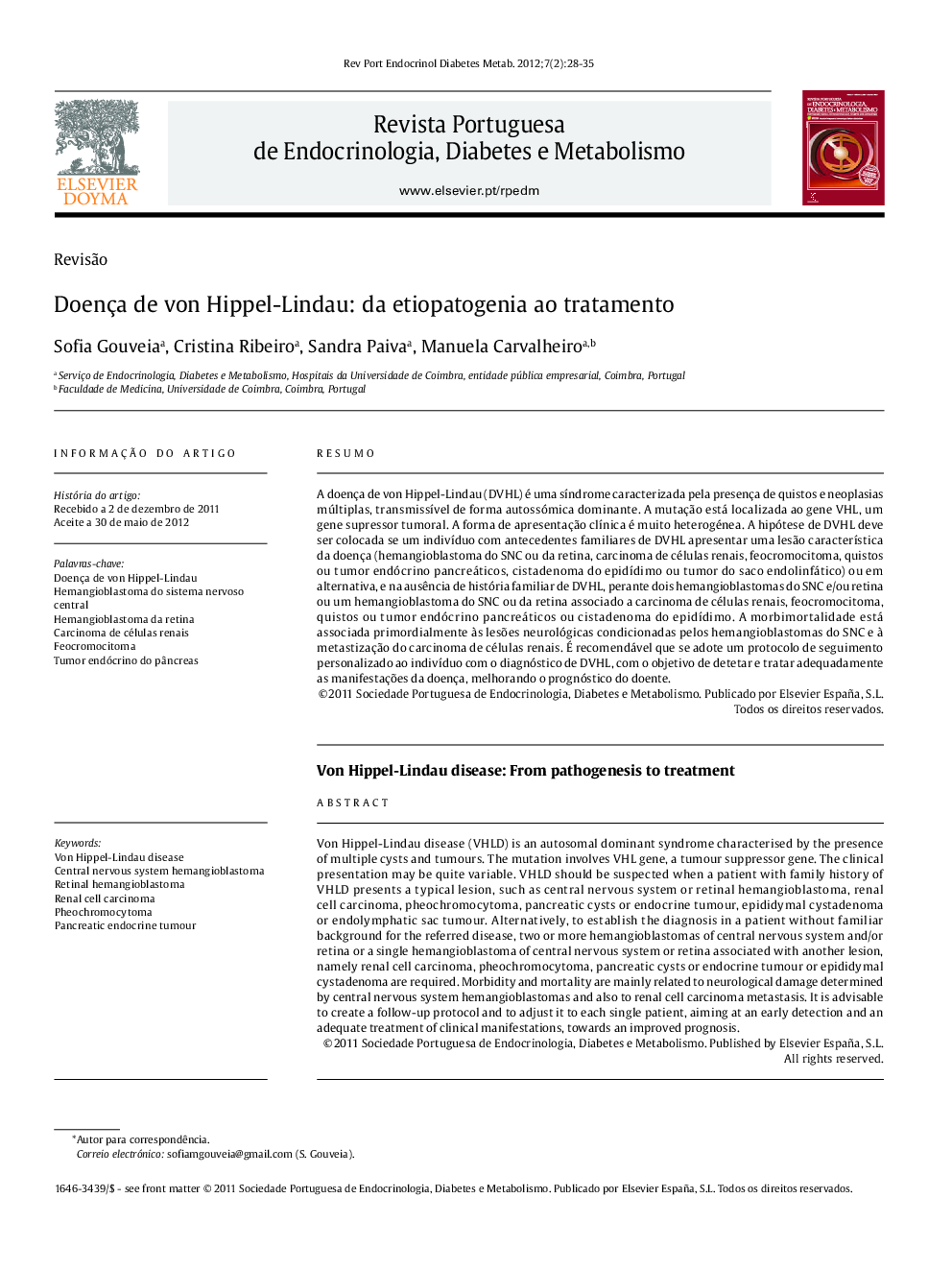| Article ID | Journal | Published Year | Pages | File Type |
|---|---|---|---|---|
| 3278377 | Revista Portuguesa de Endocrinologia, Diabetes e Metabolismo | 2012 | 8 Pages |
RESUMOA doença de von Hippel-Lindau (DVHL) é uma síndrome caracterizada pela presença de quistos e neoplasias múltiplas, transmissível de forma autossómica dominante. A mutação está localizada ao gene VHL, um gene supressor tumoral. A forma de apresentação clínica é muito heterogénea. A hipótese de DVHL deve ser colocada se um indivíduo com antecedentes familiares de DVHL apresentar uma lesão característica da doença (hemangioblastoma do SNC ou da retina, carcinoma de células renais, feocromocitoma, quistos ou tumor endócrino pancreáticos, cistadenoma do epidídimo ou tumor do saco endolinfático) ou em alternativa, e na ausência de história familiar de DVHL, perante dois hemangioblastomas do SNC e/ou retina ou um hemangioblastoma do SNC ou da retina associado a carcinoma de células renais, feocromocitoma, quistos ou tumor endócrino pancreáticos ou cistadenoma do epidídimo. A morbimortalidade está associada primordialmente às lesões neurológicas condicionadas pelos hemangioblastomas do SNC e à metastização do carcinoma de células renais. É recomendável que se adote um protocolo de seguimento personalizado ao indivíduo com o diagnóstico de DVHL, com o objetivo de detetar e tratar adequadamente as manifestações da doença, melhorando o prognóstico do doente.
ABSTRACTVon Hippel-Lindau disease (VHLD) is an autosomal dominant syndrome characterised by the presence of multiple cysts and tumours. The mutation involves VHL gene, a tumour suppressor gene. The clinical presentation may be quite variable. VHLD should be suspected when a patient with family history of VHLD presents a typical lesion, such as central nervous system or retinal hemangioblastoma, renal cell carcinoma, pheochromocytoma, pancreatic cysts or endocrine tumour, epididymal cystadenoma or endolymphatic sac tumour. Alternatively, to establish the diagnosis in a patient without familiar background for the referred disease, two or more hemangioblastomas of central nervous system and/or retina or a single hemangioblastoma of central nervous system or retina associated with another lesion, namely renal cell carcinoma, pheochromocytoma, pancreatic cysts or endocrine tumour or epididymal cystadenoma are required. Morbidity and mortality are mainly related to neurological damage determined by central nervous system hemangioblastomas and also to renal cell carcinoma metastasis. It is advisable to create a follow-up protocol and to adjust it to each single patient, aiming at an early detection and an adequate treatment of clinical manifestations, towards an improved prognosis.
